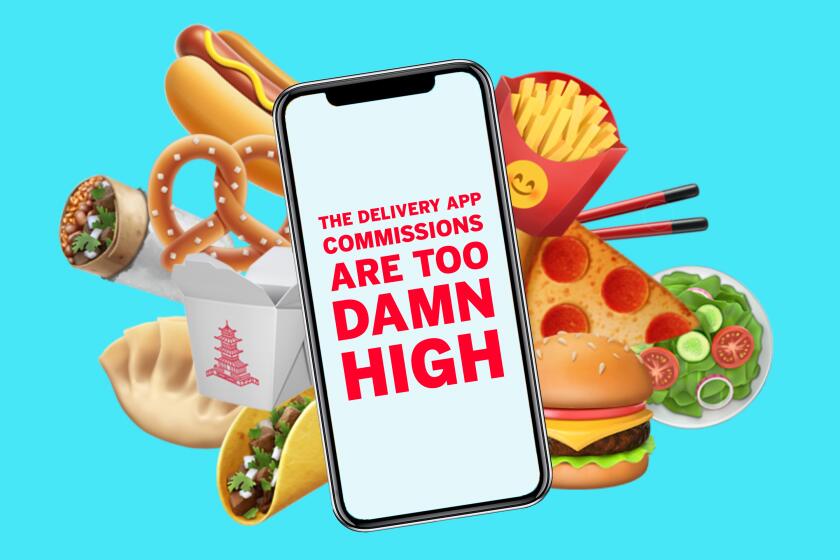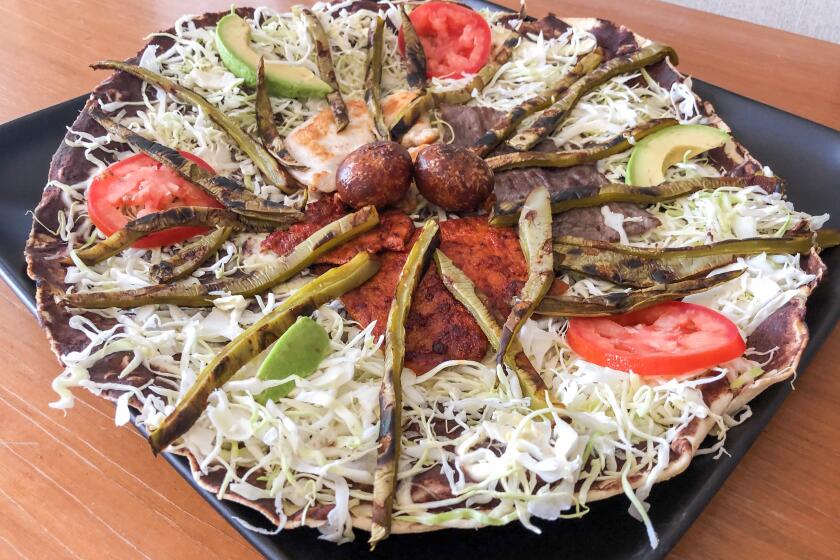To-go is here to stay: Restaurants are refining the takeout experience
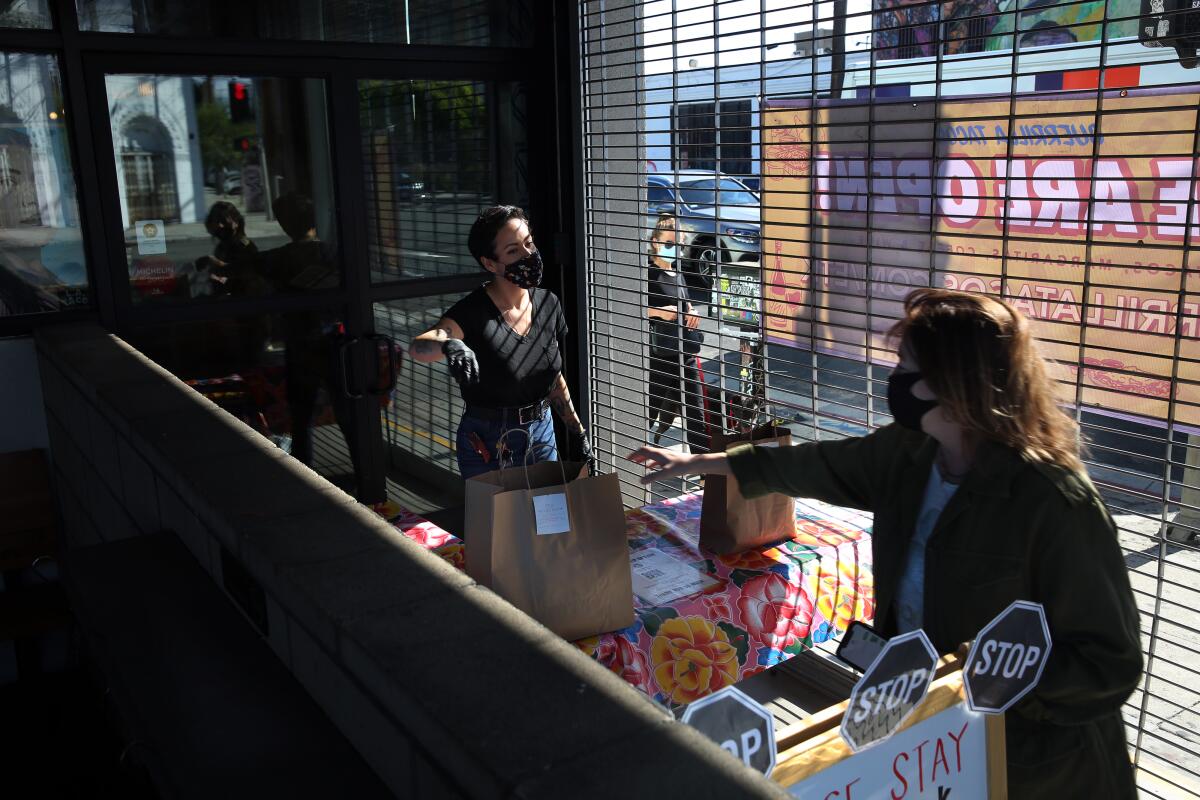
Takeout was supposed to be temporary.
When Los Angeles restaurant owners were forced to close their dining rooms, many turned to to-go thinking it would be a way to keep things afloat for what they hoped would be just a couple of weeks.
For the record:
5:46 p.m. May 19, 2020A previous version of this story incorrectly stated that Rustic Canyon had begun offering takeout for the first time. The restaurant had briefly offered an abridged takeout menu before temporarily closing in March.
That was in March. Now, two months later, it’s not clear when restaurants will be able to fully operate again.
In the absence of a firm timeline, one thing is becoming clear: To-go is here to stay for the long run.
“I imagine we’ll still rely on takeout even after we reopen,” said Andy Doubrava, executive chef of Rustic Canyon in Santa Monica, which recently began offering a newly-redesigned takeout program . “If something is selling, we’ll keep doing it.”
While our restaurants suffer, delivery apps are posting record numbers. (With apologies to Jimmy McMillan.)
Though far less profitable than sit-down dining, takeout has provided a crucial source of revenue for many businesses lately. Even once restrictions are lifted, chefs are betting that many diners are unlikely to feel comfortable in a crowded or enclosed space.
So they’re moving takeout from sideshow to center stage, rethinking and refining the to-go experience. They know the restaurants that hustle and stand out have the best chance of pulling through.
“It’s not just survival of the fittest now, it’s survival of the craftiest,” said Wes Avila, chef-owner of Guerrilla Tacos. “You have to deliver that same level of excitement and creativity even if it’s in a different format.”
Here are takeout strategies chefs are employing.
Guided by notecards and videos
At Rustic Canyon, Doubrava and sous chef Nester Silva often spend as much time packaging meals as they do cooking them. Five-course family meals are ordered in advance through the reservation site Tock, then carefully assembled for evening pickup.
For a meal that includes Belgian endive with anchovy vinaigrette, farmers market banchan, cherry-glaze pork ribs and chocolate budino, any sauces and dressing are provided in separate containers along with a detailed notecard that provides instructions on how to plate the dishes at home. Doubrava eventually plans to post Instagram videos of him plating dishes in the kitchen, so takeout customers can attempt to copy his moves at home.
“People are very much missing that restaurant experience, so we’re doing whatever we can to bridge that gap,” he said. “It should feel like they’re eating here as much as possible.”
Rustic Canyon isn’t the only restaurant taking an instructive approach.
At Rossoblu, a curbside takeout order of the restaurant’s signature minestra nel sacco comes with a link to a YouTube video of chef Steve Samson demonstrating how to assemble the restaurant’s Parmigiano-Reggiano dumplings in broth.
It’s not just survival of the fittest now, it’s survival of the craftiest.
— Wes Avila, chef-owner of Guerrilla Tacos
If it means a better takeout experience, are customers willing to reheat their lentils in the oven rather than the microwave or finish searing a steak to medium-rare? Doubrava thinks so.
Soon he plans to add a “baller” take-home caviar service and other a la carte options, including a $69 fried steak sandwich kit with black truffle sauce. “It’s all stuff we’d love to serve at the restaurant, but since we can’t, we’re trying to have fun with it.”
Changing it up
During the early phase of the pandemic, Guerrilla Tacos began offering “emergency taco kits” — a $155 package that included enough meat and tortillas to make 60 tacos, salsa, rice, beans, two dozen eggs and, most famously, a roll of toilet paper.
The kits went viral on social media, and Guerrilla Tacos was selling up to 60 in a day. But as stay-at-home orders wore on, Avila noticed that sales were flagging.
“Early on, I think people were just looking at food as survival,” he said. “The tacos in the taco kit are very basic tacos, which was fine at the time.”
Now, he has switched gears. “I also wanted to offer items that reflected our creativity.”
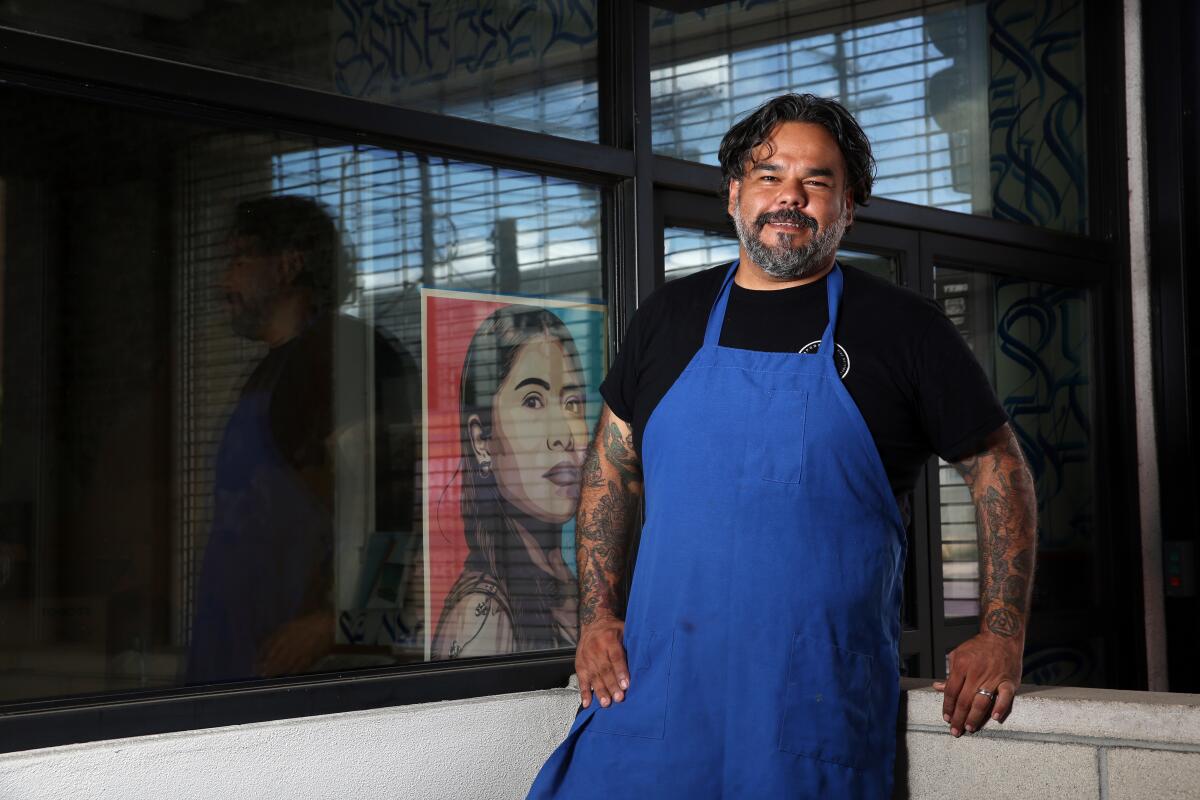
Bill Addison on Mexican food takeout and delivery during the shutdowns.
In the past few weeks, Avila and chef de cuisine Steven Londano created set meals for two, each with a specific theme. So far they’ve done a classic steakhouse menu with shrimp cocktail and Caesar salad and a Korean barbecue kit with banchan and dipping sauces; an all-vegan menu is in the works.
Avila said the restaurant’s focus on ever-changing offerings “keeps people interested in what you’re doing.”
“There’s sort of an exclusivity to it,” he said. “It’s easy right now to get stuck in a rut, as a chef and as someone ordering at home.”
As many customers look to minimize their trips out of the house, restaurants are also finding some success with larger-format dishes. Avila recently introduced a plate of smoked pork ribs designed to share. As far as his signature tacos, he plans to redesign many of them as hulking burritos to make them a better fit for takeout.
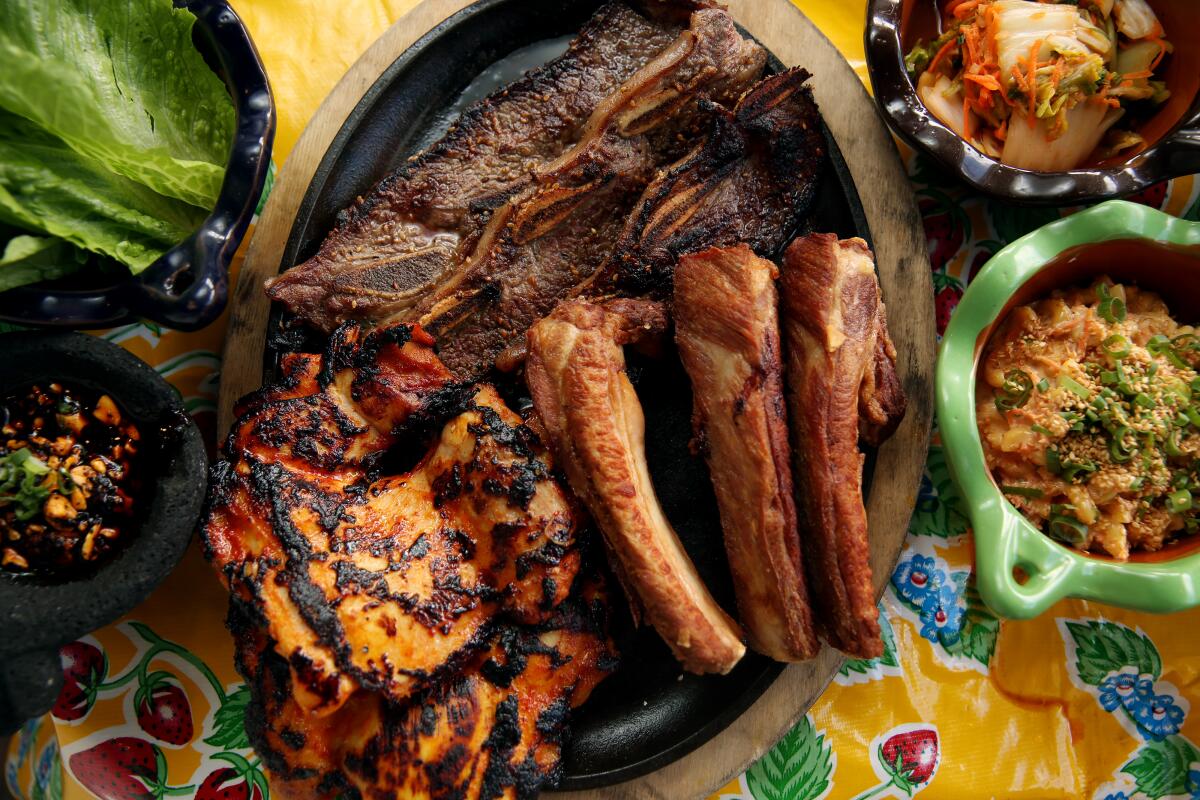
Dinner and pantry essentials
As many dining establishments across L.A. have pivoted to become pantry and produce stands, the divide between market and restaurant has become nebulous. Cook-at-home boxes, once the domain of companies such as Blue Apron, have now become a crucial lifeline for many restaurants.
At Hatchet Hall in Culver City, owners Brian Dunsmoor and Jonathan Strader have relaunched their restaurant as Hatchet Market, offering $79 meals that include a duck-fat-slathered game hen cooked at home and partly cooked sides such as potato yeast rolls and scalloped root vegetables.
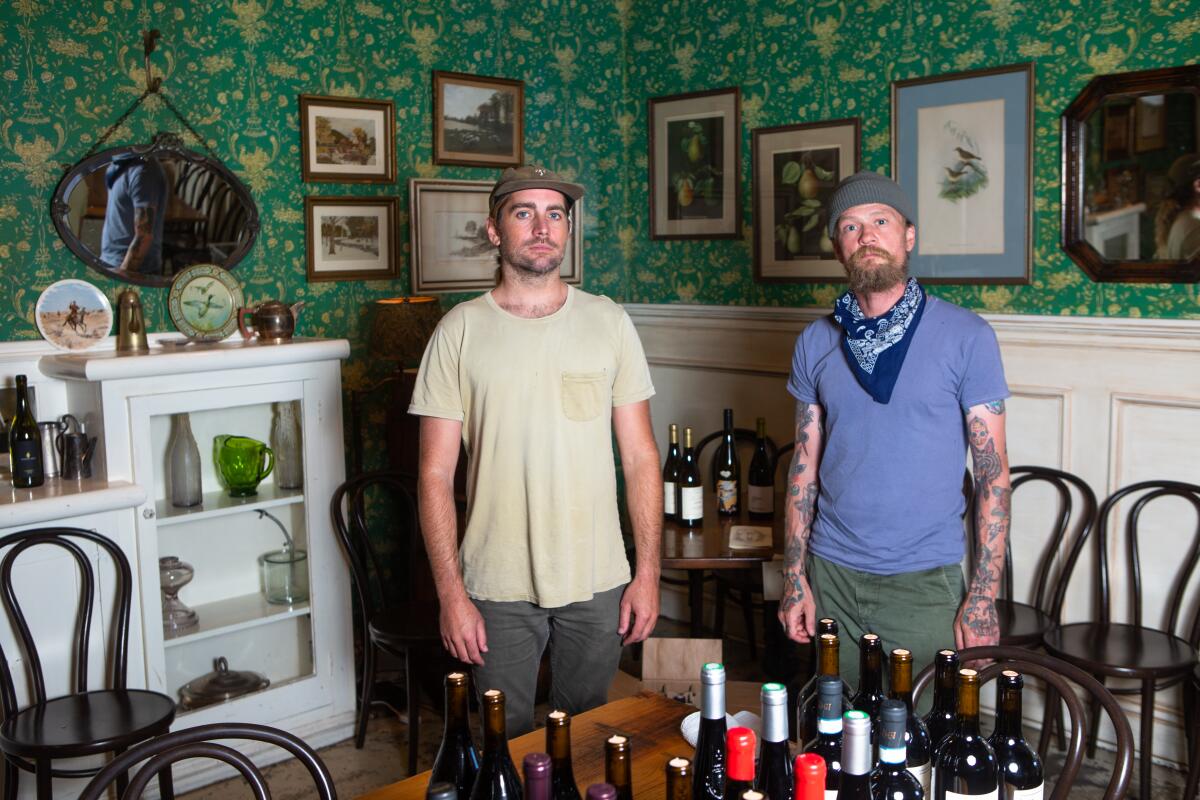
Felix in Venice and Porridge + Puffs in Historic Filipinotown offer housemade pantry items as well as takeout dishes.
These days it’s not uncommon for customers to order their nightly dinner while also stocking up for the week ahead. At Hatchet Hall, Stader said he and his limited crew have spent more than a few 14-hour workdays pivoting their operation to meet new demands.
“The fast-casual places already had it figured out,” he said. “For the full-service restaurants, we’re all trying to catch up.”
The whole kit and caboodle
Other businesses have found novel ways to translate their food experiences to the home kitchen. Uniboil, a hot pot restaurant in Monterey Park, is offering a home “hot pot kit” that includes a portable stove, fuel and a pot.
Many Korean barbecue restaurants, such as Park’s BBQ in Koreatown, have begun focusing on selling marinated meats to be cooked at home, providing all the necessary banchan, sauces and other accoutrements to build out the full KBBQ experience.
At Culver City pizzeria Roberta’s, customers have the option of picking up their Margherita pizza fully cooked or as a DIY pizza kit, which includes two blobs of pizza dough (to be shaped by hand) and containers of marinara sauce, basil and fresh mozzarella.
Strader says he doesn’t expect consumer habits to change significantly even after the stay-at-home order ends. Soon he’ll open a takeout pizza restaurant in Long Beach serving food that he sees as “recession proof.”
“We’re all in the same boat right now, just trying to see what sticks,” he said. “It’s a whole new world, and we have to come up with ways to stay relevant.”
More to Read
Eat your way across L.A.
Get our weekly Tasting Notes newsletter for reviews, news and more.
You may occasionally receive promotional content from the Los Angeles Times.
